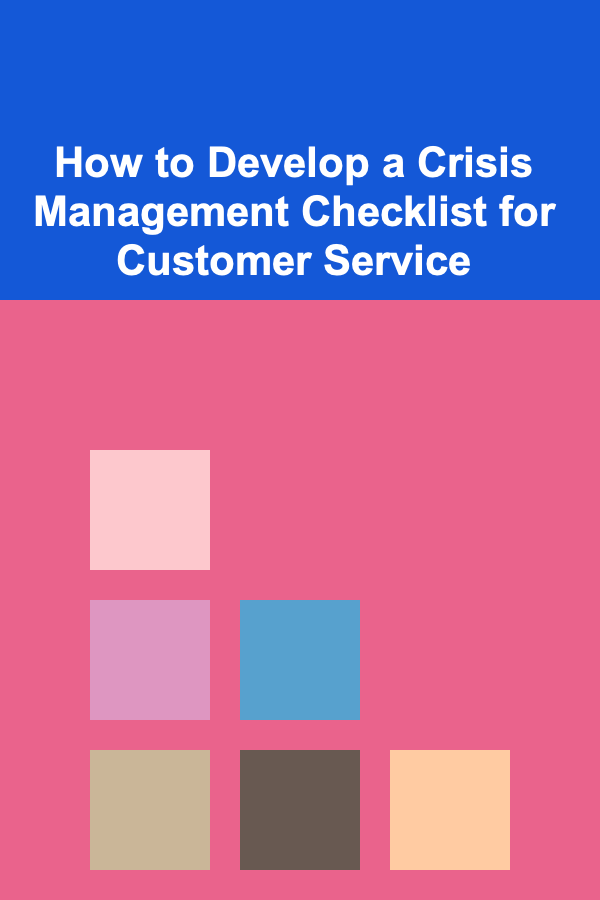
How to Price Your Designed Products for Success on Amazon
ebook include PDF & Audio bundle (Micro Guide)
$12.99$9.99
Limited Time Offer! Order within the next:

Pricing your products correctly on Amazon is one of the most critical decisions you'll make as a seller. It can determine your success or failure on the platform, directly influencing customer purchasing behavior, your product's visibility, and ultimately, your profit margins. With millions of products on Amazon, standing out is not just about having a quality product---it's also about offering it at the right price.
In this guide, we will walk you through a comprehensive, actionable process to help you price your designed products for maximum success on Amazon. We'll explore the factors that influence pricing, pricing strategies, and tips to optimize your pricing for success.
Understand the Psychology of Pricing
Before diving into the specifics of how to price your designed products, it's important to first understand the psychology behind pricing. Consumer behavior plays a significant role in how people make purchasing decisions.
Key Psychological Pricing Principles:
- Price Anchoring: This is the concept of placing your product next to a higher-priced item to make your product seem like a good deal. On Amazon, you can set a higher "list price" and offer discounts to give customers the perception that they are saving money.
- Charm Pricing: Using prices like $9.99 instead of $10.00 can increase conversion rates. This subtle strategy exploits the left-digit effect, where consumers tend to focus more on the first digit of a price.
- Bundle Pricing: Offering discounts for bundles or multi-packs can create perceived value. For example, if you sell an accessory, offering a bundle with two items at a discounted price can increase your average order value (AOV).
- Price Tiering: Offering a range of products at different price points helps attract various customer segments. You might create premium versions of your designed products for customers who are willing to pay more.
The Importance of Perceived Value
Pricing isn't only about covering costs and making a profit. It's about communicating value. The perceived value of your product is shaped by its design, quality, brand reputation, and presentation. A well-designed product can justify a higher price point, especially if it's presented with high-quality photos, a compelling product description, and positive reviews.
Conduct Market Research
One of the first steps to pricing your designed products on Amazon is to conduct thorough market research. Understanding your competition and your target audience is essential to setting the right price.
Step-by-Step Market Research:
- Identify Your Competitors: Start by researching competitors selling similar products in your category. Look at their pricing, product features, and customer reviews. Identify their strengths and weaknesses.
- Analyze Price Ranges: Find out the price ranges for similar products. This will give you an idea of where your product fits in the marketplace. Are your designed products comparable to premium items or more budget-friendly?
- Look at Customer Reviews: Customer feedback can provide valuable insights into what people are willing to pay for. If customers rave about the high quality of a product, they may be more inclined to pay a higher price for something similar.
- Check for Pricing Trends: Prices on Amazon fluctuate regularly. Use tools like Keepa or CamelCamelCamel to track historical pricing trends of your competitors. Understanding these fluctuations can help you adjust your pricing strategy in real-time.
Understand Your Target Market
Your target market plays a crucial role in determining the price of your product. Consider factors like:
- Income Levels: Are you catering to a budget-conscious or luxury-focused audience? If you're targeting high-income consumers, you might be able to price your products at a premium.
- Purchase Motivation: Is your target market looking for practical, everyday products, or are they after unique, designer items? The perceived value of your product will depend on how your target audience sees it.
- Geographical Considerations: Amazon has marketplaces in different countries, and prices may vary based on local demand and purchasing power. If you plan to sell internationally, ensure you factor in currency conversion rates and regional preferences.
Factor in Costs and Profit Margins
To price your products effectively, you need to understand all the costs associated with getting your designed products to market. This includes both direct and indirect costs.
Key Costs to Consider:
- Product Costs: This includes the cost of manufacturing or sourcing your designed products. If you're using a third-party supplier, factor in shipping fees, customs, and taxes.
- Amazon Fees: Amazon charges several types of fees for selling on its platform, including:
- Referral Fees: A percentage of each sale, typically between 6% and 45%, depending on the category.
- FBA Fees: If you use Fulfillment by Amazon (FBA), you'll incur fees for storage, picking, packing, and shipping. These fees vary based on the size and weight of the product.
- Subscription Fees: Amazon charges a monthly fee for Professional Sellers, typically $39.99 per month.
- Other Fees: You may also face additional costs such as advertising fees, Amazon's advertising system (Amazon PPC), and promotional discounts.
Calculating Profit Margins
After calculating all your costs, determine your desired profit margin. A general rule of thumb for Amazon is to aim for at least a 30-40% margin, but this can vary depending on your product category and competition.
For example, if your product costs $10 to manufacture, and Amazon takes a 15% referral fee ($1.50) and charges $3 in FBA fees, your total costs are $14.50. If you want a 40% margin, you would need to sell your product for at least $24.17.
Profit Margin Formula:
Selling Price=1−Desired Profit MarginTotal CostsChoose the Right Pricing Strategy
There are several pricing strategies you can use on Amazon, each with its advantages and disadvantages. The strategy you choose will depend on your business goals, product type, and market position.
Common Pricing Strategies:
- Cost-Plus Pricing: This is a straightforward strategy where you add a markup to your costs to ensure profitability. While simple, it doesn't always account for what the market is willing to pay.
- Competitive Pricing: Under this strategy, you price your product based on your competitors' prices. You can either match their prices, undercut them, or position your product as a premium offering. This strategy works well if you want to remain competitive but may lead to price wars.
- Penetration Pricing: This strategy involves setting a low price initially to attract customers and gain market share. Once you've built up a customer base and positive reviews, you can gradually increase the price. This strategy is especially useful for new sellers looking to establish a presence on Amazon.
- Skimming Pricing: If you have a unique, high-demand product, you might opt for skimming pricing. You start with a high price to maximize profits from early adopters and then gradually lower the price as competition increases.
- Dynamic Pricing: Dynamic pricing involves continuously adjusting your prices based on market conditions, competitor pricing, and demand fluctuations. Tools like RepricerExpress and Feedvisor can help automate this process for you.
Testing and Refining Your Price
Once you've set an initial price, it's crucial to test and refine your pricing strategy. Amazon provides tools like A/B testing (through Amazon's Manage Your Experiments feature) that allow you to experiment with different prices to see which performs best. Keep track of your sales data, conversion rates, and customer feedback to make data-driven adjustments.
Use Amazon's Tools to Optimize Pricing
Amazon offers several tools and resources to help sellers manage and optimize their pricing strategies:
- Amazon Seller Central: Seller Central provides detailed reports on sales, profit margins, and fees, helping you track the effectiveness of your pricing.
- Amazon Business Reports: These reports allow you to track performance metrics such as unit sales, revenue, and customer demographics, helping you assess the impact of your pricing decisions.
- Amazon Automated Pricing Tool: This tool automatically adjusts your prices based on your set parameters, ensuring you remain competitive in the marketplace.
Monitor, Adjust, and Optimize
Pricing on Amazon is not a one-time task. Your prices should be continuously monitored and adjusted based on competition, sales trends, and changes in costs. Regularly review your pricing strategy and use tools like repricing software to ensure your products remain competitive and profitable.
Key Metrics to Track:
- Sales Rank: Your product's Amazon Best Seller Rank (BSR) indicates how well it's selling relative to other products in the same category. If your product's BSR is dropping, it could indicate that your price is too high compared to competitors.
- Conversion Rate: Track the percentage of visitors who convert to customers. If your conversion rate is low, it might mean that your pricing isn't aligned with customer expectations.
- Profitability: Always ensure that your pricing allows for healthy profit margins. Monitor both short-term profitability and long-term sustainability.
Conclusion
Pricing your designed products for success on Amazon requires careful consideration of many factors, from market research and understanding consumer psychology to calculating costs and selecting the right pricing strategy. By adopting a thoughtful and data-driven approach, you can ensure that your products are priced competitively while also achieving your business goals. Regularly monitor your performance and be prepared to adjust your pricing as needed to stay ahead of the competition and maintain profitability. With the right strategy, your designed products can thrive in Amazon's highly competitive marketplace.
Reading More From Our Other Websites
- [Reading Habit Tip 101] Best Ways to Encourage a Shared Reading Habit Among Siblings of Different Ages
- [Weaving Tip 101] Sustainable Loom Weaving: Eco‑Friendly Fibers and Techniques for Green Crafting
- [Personal Care Tips 101] How to Select a Body Lotion for Sensitive Skin
- [Home Storage Solution 101] How to Use Storage Ottomans and Benches for Extra Room
- [Personal Care Tips 101] How to Choose Natural Deodorant Options for Sensitive Skin
- [Organization Tip 101] How to Use a Tidy Closet as an Inspiration Hub
- [Small Business 101] How to Transition Your Small Brick‑and‑Mortar Store to an Omnichannel Experience
- [Metal Stamping Tip 101] From Prototype to Mass Production: Streamlining the Metal Stamping Workflow
- [Home Party Planning 101] How to Plan a Party for a Special Occasion at Home
- [Stamp Making Tip 101] How to Combine Heat‑Transfer Techniques with Custom Stamps for Fabric

How to Create a Safe and Pet-Friendly Home Environment
Read More
How to Develop a Crisis Management Checklist for Customer Service
Read More
How to Manage Your Credit Score Effectively
Read More
How to Get ChatGPT to Generate Sports News Reports
Read More
How To Explore Blockchain for Content Creation and Monetization
Read More
How to Choose the Right Interior Doors
Read MoreOther Products

How to Create a Safe and Pet-Friendly Home Environment
Read More
How to Develop a Crisis Management Checklist for Customer Service
Read More
How to Manage Your Credit Score Effectively
Read More
How to Get ChatGPT to Generate Sports News Reports
Read More
How To Explore Blockchain for Content Creation and Monetization
Read More